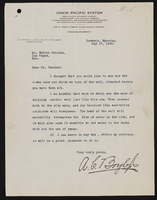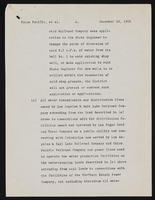Search the Special Collections and Archives Portal
Search Results
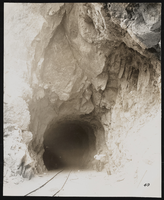
Warren A. Bechtel Album of Hoover Dam: photographic print
Date
Description
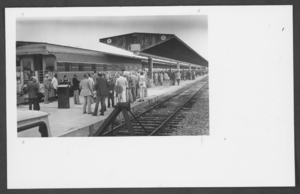
Photograph of an Amtrak train, Las Vegas, October 28, 1979
Date
Archival Collection
Description
Image
UNLV Libraries Single Item Accession Photograph Collection
Identifier
Abstract
The UNLV Libraries Single Item Accession Photograph Collection (approximately 1869-1999) contains photographs, postcards, negatives, and slides primarily pertaining to Southern Nevada, with a focus on Las Vegas, Nevada, collected by the University of Nevada, Las Vegas University Libraries, Special Collections and Archives. The collection primarily includes images of early Las Vegas, hotels and casinos along Fremont Street and the Strip, railroad infrastructure, local businesses, and residential neighborhoods. Also included are images of Hoover (Boulder) Dam's construction, MX Missile testing, Nevada mining camps, and the natural desert environment. Other images depict towns throughout Nevada including Boulder City, Henderson, Reno, Luning, Tonopah, Goodsprings, Delmar, Beatty, Panaca, Overton, Caliente, Logandale, and Aurora.
Archival Collection
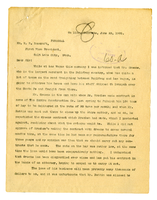
Letter from an unknown author to W. H. Bancroft, June 23, 1905
Date
Archival Collection
Description
Text
Clarence Ray oral history interview
Identifier
Abstract
Oral history interview with Clarence Ray conducted by Eleanor L. Walker in 1991 for the African American in Las Vegas: a Collaborative Oral History Project. In this interview, Ray provides details of his ancestry and upbringing, his education, and race relations in the western United States before 1930. He then moves on to his first visit to Las Vegas, Nevada in 1922, and his movements before settling permanently in the 1940s. He explains that the main source of employment for the relatively small Black population during the 1920s and early 1930s was the railroad, but a number were also in business. Mr. Ray provides thumbnail sketches of many of the early residents, and is particularly informative about "Mammy" Pinkston, Mary Nettles, the Stevens family, and the Ensley family. Systemic racial discrimination against Blacks developed in southern Nevada during the 1930s, and Mr. Ray provides some useful details on this along with his discussion of his career in gaming and his social and political activities.
Archival Collection

Letter from Walter R. Bracken (Las Vegas) to F. H. Knickerbocker (Los Angeles), February 15, 1937
Date
Archival Collection
Description
Bracken informing Knickerbocker that if repairs are not done soon on their pipeline, it would fail catastrophically. If the water master was busy, he requested the authority to hire a local crew to do the repairs.
Text
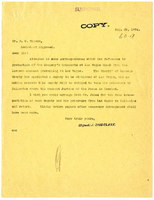
Letter from J. Ross Clark to E. G. Tilton, August 25, 1904
Date
Archival Collection
Description
Text
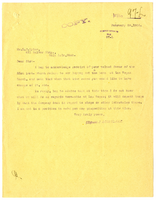
Letter from J. Ross Clark to H. P. Myton, February 26, 1904
Date
Archival Collection
Description
Text

